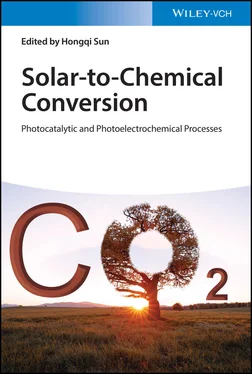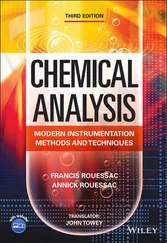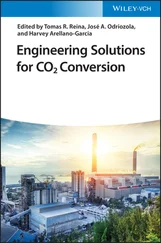The direct interpretation of crystallographic models, supported by quantum chemical calculations, indicates that in the S 1state the terminal Mn1 and Mn4 ions are present as Mn(III), with their Jahn–Teller axes aligned almost collinearly along O5. The precise protonation of the model has not been definitively assigned, with the protonation state of O5 (O 2−or OH −) and W2 (H 2O or OH −) remaining uncertain [145, 146, 150, 151, 237, 238]. The possibility of crystallographically unresolved structural heterogeneity in the S 1state is also discussed [149, 239–241], which would not be unlikely given the spectroscopic heterogeneity reported both in the S 1state and in the S 1Y Z •intermediate [118, 119, 242–246]. The preceding S 0state has one more Mn(III) ion compared with S 1, and this has been assigned to Mn3, making Mn2 the only Mn(IV) ion of the cluster in S 0. The most likely protonation state assignment involves a hydroxy for O5, provided this bridge is unprotonated in S 1[150, 247, 248], while a protonated O4 bridge in S 0[249] is less likely according to spectroscopy [248].
A widely accepted structural/electronic model for the S 2state posits the presence of two valence (redox) isomers, i.e. two geometrically similar forms with different distribution of oxidation states among the Mn ions [188, 250, 251] ( Figure 3.10). This is based on quantum chemical calculations of exchange coupling constants, spin states, and 55Mn hyperfine coupling parameters that first proposed explicit connections between modified crystallographic models and electronic structure data from magnetic resonance spectroscopies [188]. The two valence isomers differ in the position of the unique Mn(III) ion of the S 2state, either at Mn1 (“open cubane” isomer S 2 A) or at Mn4 (“closed cubane” isomer, S 2 B). The different valence distribution has two important consequences: (i) the connectivity within the cluster is slightly different, as the central O5 bridge is more tightly bound to the Mn(IV) ion in each case rather than to the Mn(III) that exhibits a clear Jahn–Teller elongation axis in the O5 direction, and (ii) the exchange coupling topology is different in each isomer, resulting in different total spin states and related spectroscopic properties. Thus, the S 2 Aisomer has a spin S = 1/2 ground state, whereas the S 2 Bisomer has a spin S = 5/2 ground state. These correspond exactly to the two observed EPR signals of the S 2state at g = 2 and g = 4.1, respectively. Additionally, the computed 55Mn hyperfine coupling constants for the S 2 Amodel agree very well with the experimental constants measured for the S = 1/2 signal [146, 188]. Finally, the two quantum chemically derived valence isomers are almost isoenergetic and interconvertible over a low barrier, in direct analogy with the two EPR signals being interconvertible and having a small energy separation [252]. Although other possibilities are discussed in the literature [253, 254], no other interpretation satisfies all of the above experimental constraints.

Figure 3.10Proposed models for the inorganic core in the S 2state of the OEC, with the first coordination sphere mostly omitted for clarity. The different magnetic topologies of the two valence isomers, as expressed through the pairwise exchange coupling constants J ij(values shown in cm −1; J < 0 is antiferromagnetic coupling), lead to different total spin states and g values for the corresponding EPR signals.
The S 2→ S 3transition is the most complex among the observable transitions of the catalytic cycle and the subject of active research. The nature of the S 3state itself remains contentious [255], particularly after recent XFEL models of PS‐II were interpreted in terms of mutually incompatible valence states and structural forms [58, 61, 63]. A plausible scenario that is well supported by quantum chemical calculations on realistic models of the OEC and is maximally consistent with spectroscopic data on the electronic structure of the cluster is presented in Figure 3.11. It suggests that the presence of two valence isomers in the S 2state plays a functional role as part of a gating mechanism [7, 191, 256]. The essential features of this mechanism are as follows: (i) formation of the tyrosyl radical, i.e. the S 2Y Z •intermediate, causes a reorientation of the dipole moment of the OEC toward Asp61 [257], which can act as proton acceptor [51, 152, 181, 258–260]; (ii) deprotonation of the cluster is required for the OEC to progress past the S 2Y Z •form [191]; and (iii) the deprotonated S 2 Aisomer cannot progress to the S 3state, but the deprotonated S 2 Bis predicted to be so unstable in the presence of Y Z •that the cluster spontaneously reduces the tyrosyl radical before completion of a Mn1 → Mn4 O5 bridge shift to yield an all‐Mn(IV) S 3state species, S 3 B[191]. This has an unusual five‐coordinate Mn(IV) ion at Mn4 that correlates with the high total spin of S = 6, the unusually high local zero‐field splitting of the five‐coordinate Mn(IV) ion [261], and the ability to absorb in the NIR [191]. These properties can explain a whole list of observations regarding the S 3state that would otherwise be incomprehensible. These include the presence of different populations that give or do not give signals in the EPR [228, 242] and that absorb or do not absorb in the NIR [262–265]. This species can subsequently bind water either internally via the calcium ion [250] or externally [191, 266] through a channel associated with methanol and ammonia interaction with the OEC [157, 169, 170, 267–270] to give rise to additional isomers, all assignable to the S 3state and all featuring four Mn(IV) ions [191, 255, 271, 272].

Figure 3.11The S 2→ S 3transition according to Retegan et al. [191] and possible isovalent Mn(IV) 4components of the S 3state; the superscript “W” indicates binding of an additional water ligand.
Alternative ideas for the S 3state include formation of an oxyl radical as opposed to Mn‐centered oxidation [273, 274] and onset of O—O bond formation as a peroxo or superoxo unit [58, 275–277]. These ideas are consistent to some extent with at least one of the available XFEL crystallographic models of the S 3state, but not with the bulk of spectroscopic information that requires Mn‐based oxidation in the S 2→ S 3transition [255] or with the most widely accepted interpretations of substrate exchange kinetics [278–280].
The uncertainty about the composition and nature of the S 3state translates into uncertainty about the nature of the subsequent steps that remain experimentally unresolved and include formation of the active species after the final light‐driven oxidation, formation of the O—O bond, release of dioxygen, and reconstitution of the S 0state. A well‐known radical‐based mechanism for O—O bond formation has been proposed by Siegbahn and is based on structure S 3 A,Wof Figure 3.11[281–288]. It involves ligand‐based oxidation in the S 4state to yield a terminal oxyl radical at Mn1 that couples with the oxo bridge that connects Mn3, Mn4, and Ca to form the O—O bond ( Figure 3.12a). The same type of oxyl–oxo coupling can take place starting with the S 3 B,Wisomer. An alternative to the above mechanism was proposed by Shoji et al. [290] and also assumes S 3 A,Wto be the active species, but involves initiation of O—O bond formation at the S 3Y Z •intermediate coupled with intramolecular proton transfer. This circumvents the need to invoke an actual S 4intermediate because the O—O bond is created with concomitant Mn(IV) reduction to Mn(III) before the tyrosyl radical of the S 3Y Z •intermediate is reduced by the inorganic core [290]. It is noted that formation of a terminal oxyl radical [291–293] in the hypothetical S 4state is connected to the high‐spin octahedral Mn(IV) ion in the S 3state, since formation of a genuine Mn(V) ion is unfavorable in such ligand field [289]. However, if water binding is not required for advancement of the OEC from the S 3to the S 4state, then the S 3 Bmodel of Figure 3.11can also be a candidate for catalytic progression. In this case, Krewald et al. [289] demonstrated that Mn4 remains five‐coordinate and forms a genuine Mn4(V)‐oxo species, with two unpaired electrons localized on the high‐spin Mn4(V) ion and no spin density on the equatorial oxo group [289]. This allows O—O bond formation to occur via genuine nucleophilic coupling that might occur synchronously with water binding to Mn4 ( Figure 3.12b) [289], while the formation of three Jahn–Teller axes pointing simultaneously toward the newly formed O 2unit would contribute to its irreversible expulsion from the active site. The mechanism of Krewald et al. provides access to thermodynamically favorable even‐electron water oxidation [294, 295], potentially to a genuine single‐step 4‐electron transformation, and entirely avoids formation of potentially harmful radical intermediates [289]. Finally, it is worth mentioning an idea proposed by Zhang and Sun, as yet unsupported by quantum chemical calculations, according to which a redox isomerization in the highest state of the cycle could create a cluster with a highly oxidized Mn(VII) center and two terminal oxo groups that would couple to yield dioxygen [296]. Detailed discussions of these and other alternative hypotheses for the mechanism of biological O—O bond formation are available in recent literature [7, 255, 274–277, 287, 288, 290, 297–301].
Читать дальше




![Евгений Матерёв - Музеи… или вдохновляющая музыка The Chemical Brothers [litres самиздат]](/books/437288/evgenij-materev-muzei-ili-vdohnovlyayuchaya-muzyka-th-thumb.webp)









